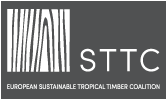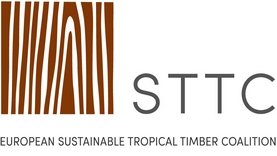The tropical timber sector can manage the EUDR challenge

Tropical timber suppliers to Europe express confidence that they can rise to the challenges of the incoming EU Deforestation Regulation (EUDR). However, there is concern that there is insufficient detail on implementation and how companies will be expected to provide data to demonstrate compliance. The EUDR comes into effect for larger businesses at the end of 2024 and six months later for affected SMEs.
It demands that suppliers that first place six so-called Forest and Ecosystem Risk Commodities (FERCs) on the EU market, including timber and wood products, undertake due diligence to demonstrate goods are not linked to deforestation or forest degradation. There is a requirement for geolocation coordinates to show exactly from which plot of land they originated and also for information on the time of harvest.
The EUDR changes the status of EU FLEGT-licensed goods. Under the previous EU Timber Regulation (EUTR), which the EUDR supersedes, a FLEGT license exempted products from further due diligence on entering the EU. Under the EUDR, a FLEGT license will be accepted as proof of legality, but suppliers must still undertake additional due diligence to prove goods are not implicated in deforestation.
The new regulation also involves benchmarking supplier countries according to the risk of deforestation (high, medium, low). Levels of due diligence required on goods will vary accordingly. In an interview with the UK Timber Trades Journal, Geneviève Standaert, export manager of the Belgian-based international timber trader, raised the issue of the lack of implementation information.
“The text of the law is ready, but the practical guidelines won’t be until December 2024 when the new legislation will be enforced,” said Ms Standaert. “So we will have to wait and see what is required in day-to-day business in terms of such areas as customs clearing and training and where to upload data and in what form, including how we submit geolocation information.” She added that the ‘plots of land’ for which the EUDR demands geolocation coordinates will vary widely. A ‘plot’ is defined as ‘land within a single real estate property’. It could be a few hectares or tens of thousands. To stay informed, Vandecasteele is signing up for numerous presentations on the subject and is keeping suppliers informed.
Vandecasteele believes the timber sector’s EUTR experience, resulting in closer relationships between buyers and suppliers, leaves it well-placed to deal with EUDR. “Under the EUTR, we’ve been working for 10 years with suppliers as partners, so this gives us a real head start in comparison with the other commodities covered by the EUDR,” said Ms Standaert.
Precious Woods also believes its experience collating geolocation data to prove legality under the EUTR stands it in good stead with the EUDR. But it also highlights a lack of information on how the latter will be administered. “Our main concern is the EUDR IT system which is still in development,” said co-chief executive officer Markus Pfannkuch. “If the system and process are too complicated, we’ll need to recruit more staff.” In addition, some issues are foreseen with regards to harvest information. “We can’t attribute a piece of lumber that arrives in a bundle to a specific tree,” said Mr Pfannkuch. “However, we know when trees were harvested and can relate the lumber inside the bundle to the specific harvesting periods.”
Interholco is confident it ‘can meet all requirements’ of the EUDR, including geolocation details for timber origin, given that most of its timber comes from its own concession in the Republic of the Congo. “Some details of implementation are still unknown, such as how the European portal for downloading EUDR information will operate and whether we can give plot information annually, or have to provide it on each invoice,” said Vice President of Production and Sales Christophe Janssen. “But we don’t foresee problems.”
There is also a view that new tools and initiatives will aid the implementation and monitoring of and compliance with the EUDR. These include the Forest Data Partnership, a project involving the World Resources Institute, UNFAO, Google, NASA, the US Government, and Unilever. This is developing a ‘consistent geospatial data ecosystem’ to enable companies, governments, NGOs, researchers, and civil society to access open-source, validated data that can be used for the monitoring, verification, and disclosure of progress in reducing deforestation and advancing restoration.





